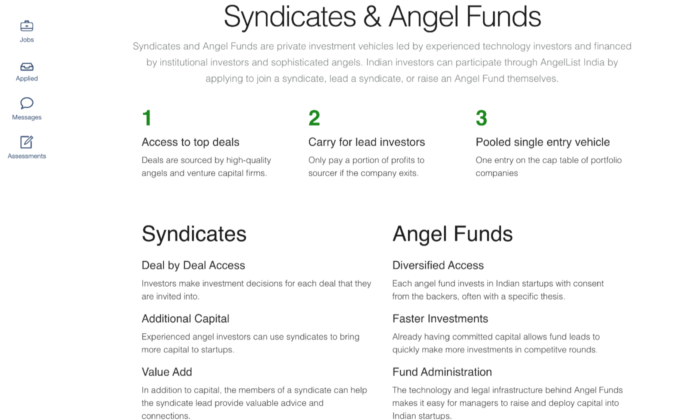
Disclosure: This content is reader-supported, which means if you click on some of our links that we may earn a commission.
Anyone can start up a business. No college degree, huge bank balance, or corporate experience necessary.
All you need is a great idea, the right systems, and the drive to see it through.
Since you’re already searching for ways to learn about how to start a business, odds are you already have an idea and the drive. What you need to know is how to start building your future empire.
In this article, I’m going to discuss the exact steps to start a business so that you can put the right systems in place.
Your 2-Minute Cheat Sheet
I’ll walk through each step in much greater detail below. Here, I want to give you the bare-bones cheat sheet for how to start a business now.
First, refine your idea based on the needs and demands of your target customers, along with your preferences.
Next, you’ll create a business plan. This is a crucial part of the whole process, so you have to get this right.
After sketching out your business’s entire framework, do market research, and collect feedback from friends, mentors, and family.
Then you need to tackle the legal side of things. Get started early in case there are any snags. This includes deciding your business structure, registering your business, getting the necessary license and permits, and setting up bank accounts.
At this point, you have your idea and a plan to make it come to life. You can then use it to arrange for the required capital to launch your product or service. Follow this up by building your team and finding a location if you’re opening a physical store.
Finally, focus your efforts on generating more sales and growing your business, which is also what you’ll find yourself doing for most of your career.
That’s a few years of business distilled to a couple paragraphs. Let’s take a closer look at each step. Of course you should feel free to skip steps if you have already locked down the basics.
- Come Up With a Business Idea
- Conduct Market Research
- Lock Down the Legal Stuff
- Write Your Business Plan
- Raise Capital for Your Business
- Develop Your Product or Service
- Build a Reliable and Responsible Team
- Find a Business Location
- Work On Generating Sales
- Expand Your Business
Step 1: Come Up With a Business Idea
Every business begins with an idea. If you already have one, congratulations! You can proceed to the next step. If not, you need to start brainstorming.
Here are a few tips to come up with a great business idea (I made a list of over 25 home-based businesses as well):
- Think of ways to get ahead of the curve. Think of how your product or service can change the business landscape, especially with the constant technological advancements.
- Solve a problem you identify. After all, your customers would prefer more of a good thing and less of a bad thing.
- Try to bring a fresh perspective that helps you gain a competitive edge over your competitors.
- Think of ways to make your approach better, cheaper, and faster if your business idea isn’t new.
At this stage, you can also conduct surveys and collect perspectives by meeting people and asking for advice. Researching ideas online is another excellent way to come up with business ideas.
Step 2: Conduct Market Research
The whole point of conducting market research is to understand typical consumer behavior, pain points, and relevant market trends in your chosen niche. This is a sure way to determine how your potential startup might fit into the existing industry landscape.
Try to find the answers to the following questions while doing market research:
- What product or service is currently in demand in your given market?
- What is the market size, or how many clients make up your target audience?
- How many competitors share a similar concept to your business idea?
- What is the price that customers are willing to pay for products and services in your market?
- What’s the typical consumer engagement in your market? Did your competitors move online during the pandemic? Can you replicate their sales process or do it better?
One of the best ways to gain genuine insights is to speak with consumers directly. Take surveys, make questionnaires, and do one-on-one interviews.
Another free resource you should absolutely use is Google. Say you are starting a business that sells shampoo to men. I’d search “shampoo for men”, “men’s hair care”, along with other terms and phrases in the space. Then I’d take a hard look at the first page of results for each keyword.
What are the top websites (not paid ads) doing? Who are they speaking to? How do they position their products and services?
Asking simple questions like these can give you a ton of insight into the market. You can also plug keywords into tools like Ubersuggest to find out how many people are searching for these terms each month.
Researching your market is an ongoing process. What you find out today may change tomorrow.
I put this as Step 2 because you want to get started early, but you should be constantly trying to understand the trends in your space.
Step 3: Lock Down the Legal Stuff
I always make sure to get the legal stuff out of the way early. This way, I don’t have to worry about anybody else taking my big idea, ending up in a bad partnership, or getting sued because of misinformation.
Determine your business structure first, as it’ll dictate the legal and tax requirements you will have to meet. Your options include sole proprietorship, partnership, limited liability company (LLC), and corporation.
Enlist a tax professional’s services, as every structure has its own set of tax requirements, or use an online business formation service.
At this stage, you’ll also have to choose a business name and register your business. Find out whether your chosen name is available for registration in your state and within the digital space. You want availability as a:
- Business name in your state
- Domain name
- Social media platform usernames

If a specific name isn’t available, you can always consider permutations of the name. Make sure your domain name and business name aren’t impinging on any registered trademarks.
There is a quick checklist of other things that you’ll need:
- Federal tax ID
- State tax ID
- Permits and licenses (as needed)
- Business bank accounts
- Trademarks, patents, and copyrights (as needed)
It’s best to consult a lawyer to cover everything you need. You can always work out things on your own, but sometimes it’s best to ask an expert.
Step 4: Write Your Business Plan
Many people question the purpose of creating a business plan. After all, if you already have a vision for your business, why write it down?
When you create a business plan, you describe every aspect of your business in a formal document. You put everything into words.
In the words of Benjamin Franklin, “There never was a good knife made of bad steel.”
It’s precisely why a business plan is such a crucial part of any business. It defines your thoughts and research and exactly what you need to do to make a business a success.
This helps put things into perspective and allows you to identify areas to streamline future processes.
Let me clarify: Your business plan doesn’t need to be 100 pages long. It only needs to be readable and include the main components. Such as:
- Pain points your business solves
- An elevator pitch about what your business does
- A list of your target audiences
- An idea list of how you’ll promote your business (your marketing strategy)
- The financial plan of how you’ll raise money to pay and how your business will make money
- Financial documents
Do a SWOT analysis (Strengths, Weaknesses, Opportunities, and Threats) of your business, too, to gain insights and identify ways to achieve your goals.
As the industry and market are always changing, you’ll find yourself revising your plan frequently. Periodic revisions and refinement of your business plan ensure that your business remains competitive in the long run.
Step 5: Raise Capital for Your Business
There are many ways you can get the resources to start your business. Below, I’ve discussed some of the best ways I found raising capital is easy and effective. You can choose one or more that work best for you.
Start at Home
Bootstrapping your business is a long process, but it gives you full control over your business. You can also leverage personal relationships by asking friends and family for a loan or to invest in your business.
Online Crowdfunding
There’s no disputing the power in numbers, especially when it comes to raising capital. Crowdfunding gives you direct access to small investments that can add up to something massive.

Check out Kickstarter or Indiegogo, or Google a list of the most popular crowdfunding websites. Crowdfunding is more for a physical product than a service.
Reach Out to Venture Capital Investors or Local Angel Investors
Venture capitalist investors look for proven teams that require a capital investment of $1 million or more, which is why you need some traction before approaching them.
If you feel you don’t have such traction right now, you can instead apply to online platforms like AngelList and Gust to find potential investors who would be interested in your project.

Apply for a Small Business Grant
Grants.gov is an online directory of more than 1000 federal grant programs that can supply you with the capital to kickstart your project. Although the process is long, you don’t have to give away any equity.
Get a Bank Loan or a Line of Credit
Applying for a bank loan is easy, but you should do so only if you really need a bank loan and if you’re eligible. You can head over to the Small Business Administration to look for loan opportunities.
Step 6: Develop Your Product or Service
Nothing feels better than seeing your idea come to life. The only problem is creating a product takes a village–if not a city.
You’ll have a different set of requirements based on your product or service. For instance, if you want to develop an app, you want someone with the technical know-how, whereas if you’re going to mass-produce an item, you’ll need a manufacturer.
Product simplicity and quality should be your top priority. Rather than creating the cheapest product, focus on developing something that catches someone’s attention. You can further streamline the process by keeping in mind the following tips:
- Avoid handing over product development to someone else or another firm, and if you do, make sure you supervise constantly.
- Implement regular checks and balances to reduce the level of risk involved. For example, if you decide to hire freelancers, hire multiple people so that you don’t put all your eggs in one basket.
- Enlist specialists instead of generalists. A jack-of-all-trades isn’t what you need right now.
- Always operate within your budget.
For service-focused entrepreneurs, the game is slightly different.
Your primary focus should be to have the necessary certificates and educational requirements. Search online job portals and freelance working platforms to find opportunities. Upwork and ProBlogger could be great places to start.
Step 7: Build a Reliable and Responsible Team
What’s the best way to scale your business and achieve all your organizational goals?
Have a good team.
One of the critical aspects of a growing business is delegating responsibilities to other people, whether a partner, employee, or freelancer. Here are a few tips to help you find the right team members:
State Your Goals Clearly
When your team members understand your vision and their role in helping you achieve it, they’ll make fewer errors.
If you are just starting out, you’ll probably be interested in the some of the really great free project management software out there. These aren’t free trials, and you’ll be able to make sure everyone is on the same page–no extra cost to you.
Establish and Follow Hiring Protocols
Welcoming people to your team involves several processes, ranging from screening people, carrying out interviews, and having proper forms. This will help you create a more competent team.
Create a Strong Company Culture
Great company culture is all about respecting and empowering employees through training and mentorship.
You don’t need futuristic decor or ping-pong tables (if you can afford that, that’s great!) but you do need a positive atmosphere where everybody feels welcomed and appreciated.
Step 8: Find a Business Location
One in four businesses that starts within the next 12 months will have a 100% remote workforce. But if you decide to open a brick-and-mortar retail business, you need to focus on getting the right location.
Here are a few things you should keep in mind:
- Demographics: Think about your customers and how they interact with your location. Does your target clientele frequent the potential location? Does your location reflect the image you’re trying to project?
- Foot Traffic: Monitor the foot traffic outside a potential location throughout the day. Do you see a couple of passers-by throughout the day? Or is it away from the public eye? Is there parking available?
- Business Community: The business community refers to the other businesses nearby that can bring you foot traffic. Is there a mall nearby? Are there restaurants where customers can go after shopping at your store?
- Competition: Contrary to popular belief, having competitors nearby isn’t always bad. Whatever your stand, you should be aware of whether or not you have competitors nearby before deciding on a location.
Research the history of the location as well. If other businesses have tried and failed in the space, find out why. And of course, always keep the cost in mind. Expenses like rent, cleaning services, insurance, and parking fees need to be considered.
Step 9: Work On Generating Sales
Start by listening to your potential customers to know their wants, needs, likes, and dislikes. Next, learn the art of asking for a commitment without being too pushy. In other words, don’t force your customers into buying goods from you, or they won’t return.
Moreover, you have to prepare yourself for hearing “NO“ too. Sad, I know.
People listen to your elevator pitch despite having no intention to buy simply because they’re polite. If they don’t end up buying from you, don’t get disheartened.
Grow your customer base and put out advertisements to find an audience to fit your business. At this point, you’ll also have to figure out the right sales funnel and strategy to generate leads and convert them into paying customers.
Sales and marketing are critical to building a successful business. Check out some of these free customer relationship management tools that help you stay organized as you grow your contact list.
Step 10: Expand Your Business
You must have a growth plan if you want to earn and scale your business. Luckily, there are about a million ways to grow your company.

I’d highly recommend utilizing the power of social media through organic, influencer, and paid campaigns. Email marketing works equally well to create and nurture a dedicated customer base.
One of the key aspects of long-term growth is to have a dedicated customer base and reduce customer churn. All the efforts you put into nurturing your existing customers can be useful in the long run when they act as your repeat customers, ensuring revenue in the long run.
Conclusion
We’ve covered everything you need to know to start a business. Now you can prepare for the exciting adventure in front of you.
Taking the first step can feel a bit scary, but don’t fear. Take the plunge and launch your business–it’s a lot of fun!
Of course, you’ll find challenges and roadblocks along the way, but as long as you remain dedicated and driven, you can learn from your mistakes and climb higher up the ladder.
Don’t wait any longer!
from Neil Patel https://ift.tt/3q9pPOz